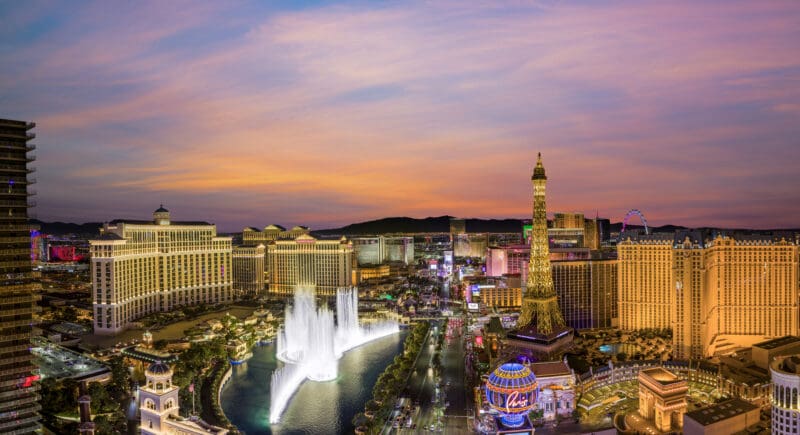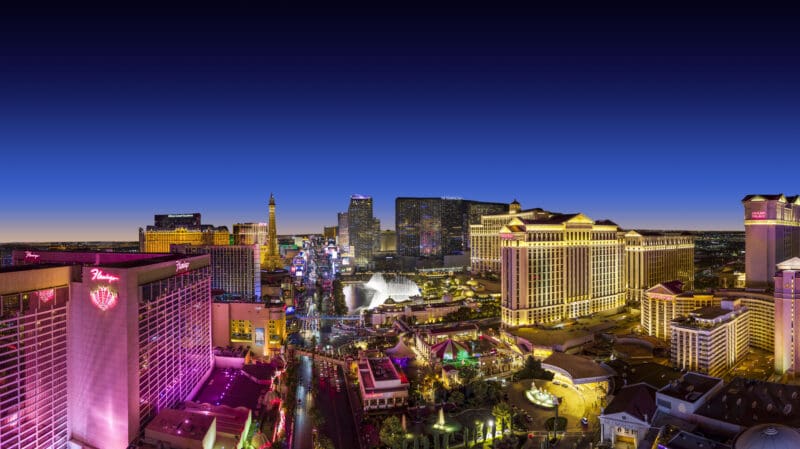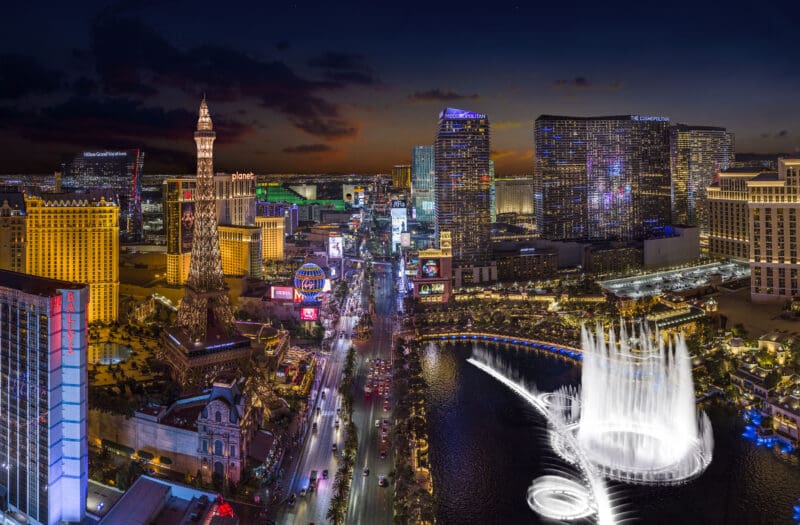I OFTEN talk to my students about good architecture being honest. Buildings and places have a social and cultural duty to civilians to be understood for what and where they are. For example, concrete should be expressed as concrete.
A building’s form should reflect the context where it’s set. Its spirit should derive from its location’s history, reinterpreted in a contemporary way. But I’m 900 feet in the air right now, aboard an eight-person helicopter, flying past a black, glass pyramid with a jumbo pool behind it, in the middle of the Las Vegas Strip, not Luxor.
So after spending the last year going on-and-on-and-on about how great the architecture of the Renaissance and the Enlightenment was for their absolute search for truth, I have no idea how I’m going to explain my newfound love for Las Vegas to my students or my followers. I’m going to have to eat crow.

Helicopter view of Las Vegas

View of Las Vegas’s Sphere
Somehow, from up here I see the Eiffel Tower and the Chrysler Building. Over there, a skyscraper mimicking a Roman temple. If the architects of the Renaissance had seen Caesar’s Palace—forget it—they would’ve given up and gone back to the Dark Ages. And then, there’s Sphere. Rising 366 feet, this massive orb alit with 1.2 million LEDs on its surface would’ve blown Etienne-Louis Boullée and the other Visionary Architects of the 18th Century away.

Caesar’s Palace, mimicking an Ancient Roman Temples without respecting their proportions

Buildings and neon signs at the Las Vegas Strip
For context, just 20 minutes ago this very same helicopter swooped over the Mojave Desert, landing inside the Grand Canyon, a geological marvel that’s been there for an estimated 5 million years. There’s nothing purer, more authentic, more honest than landscape.
Sin City, on the other hand, is a mesmerising paradox: a factual, touchable, drivable, desert mirage. An oasis in the middle of nowhere, Vegas puzzles observers, through spaces of deception and mistaken beliefs, and experiences oozing magic and folklore. And when you think about it that way, architecturally speaking, Las Vegas, quite frankly, is a masterpiece.
by Regner Ramos
For more, www.visitlasvegas.com and www.lvcva.com
